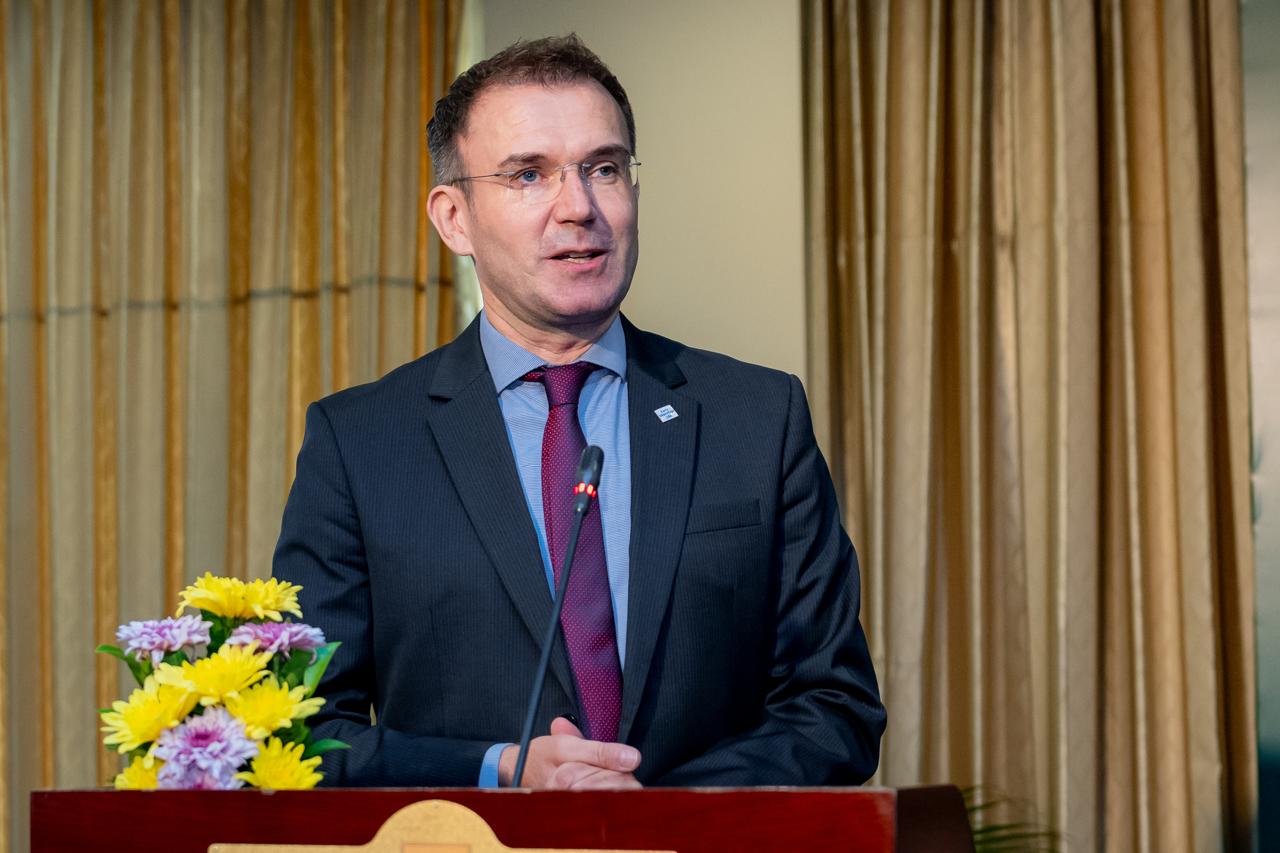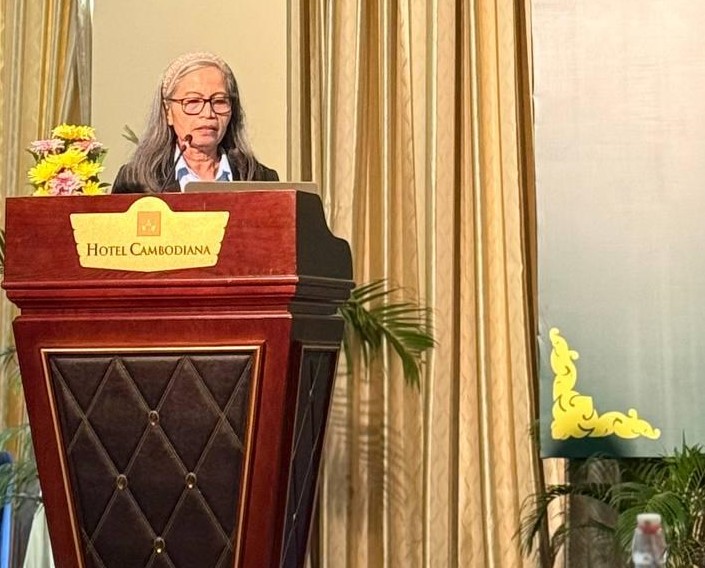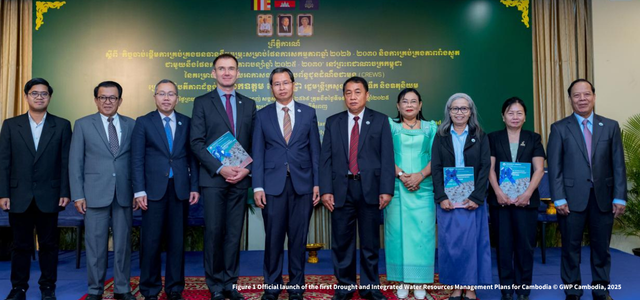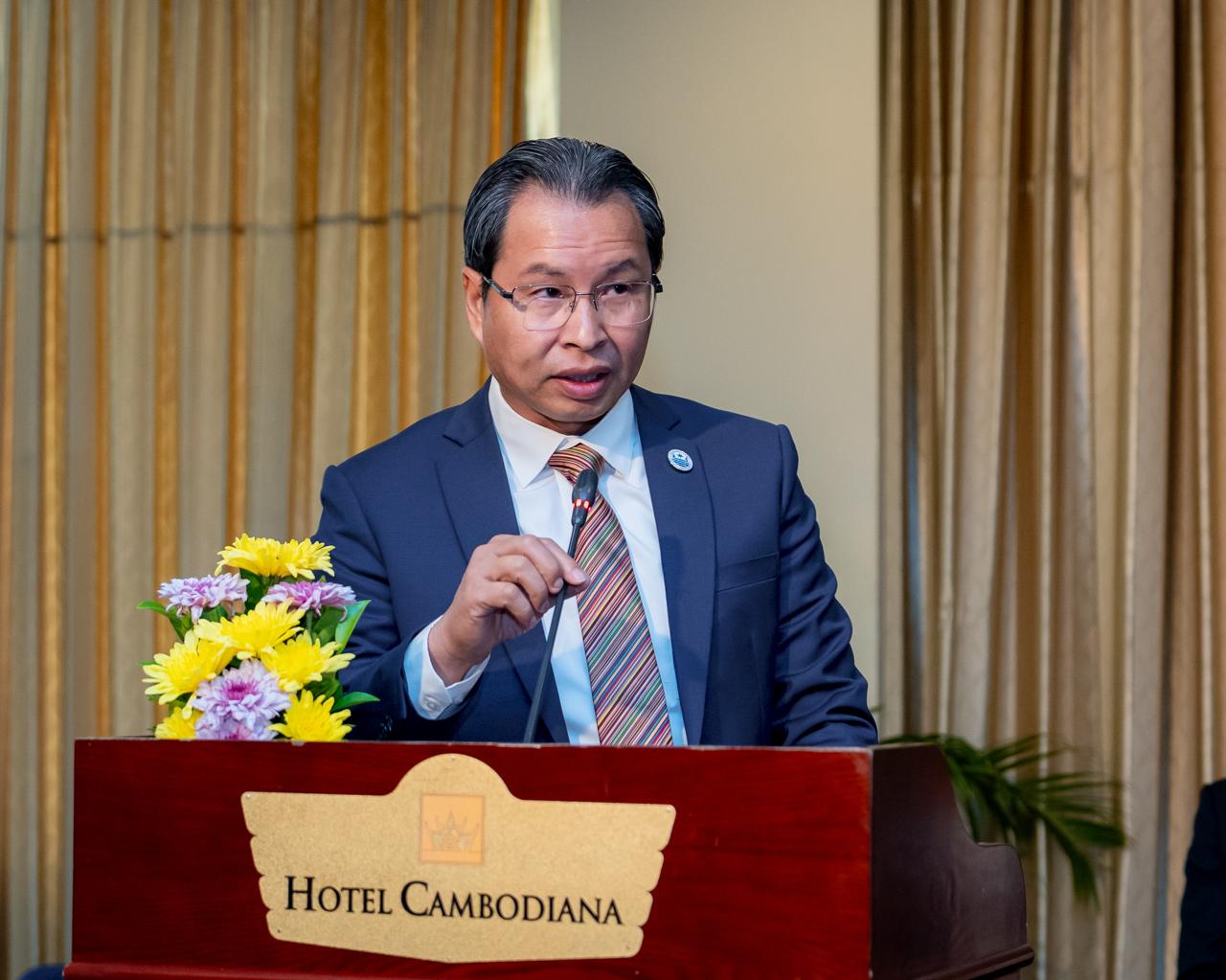The launch ofthe Cambodia National Action Plan on Drought Management and Adaptation 2025-2030 and Cambodia Climate Resilient and Integrated Water Resources Management (IWRM) Action Plan 2026-2030 marks a new era in the country’s commitment to sustainable water governance and climate resilience.
The launching event, led by the Ministry of Water Resources and Meteorology (MoWRAM), brought together high-level officials and key national stakeholders as well as international partners who supported the development of these plans, namely the World Meteorological Organization (WMO), Global Water Partnership Southeast Asia (GWP-SEA) and GWP Cambodia.
The two action plans developed under the leadership of MoWRAM, with support from international partners, provide a strategic roadmap to strengthen Cambodia’s climate resilience and integrated water resource management. The Cambodia National Action Plan on Drought Management and Adaptation 2025-2030 aims to increase the capacity to forecast and prepare for drought risks, prioritizes early warning systems, climate-resilient policies and infrastructure, and efficient water use technologies for vulnerable communities. Further, the Cambodia Climate Resilient and Integrated Water Resources Management Action Plan 2026-2030 aims to enhance water governance and sustainable development through improved financing, integrated multi-purpose water management in five priority basins, and strengthened river basin governance.
Figure 2 H.E. Chhea Bunrith, Permanent Secretary of State, MoWRAM © GWP Cambodia, 2025
Opening the event, H.E. Chhea Bunrith, Permanent Secretary of State Ministry of MoWRAM, emphasized Cambodia’s view of water as a critical driver of national development. As part of the government’s Pentagonal Strategy, water has been prioritized alongside people, roads, electricity, and technology. The launch of the IWRM and Drought Action Plans was described as a significant step forward, representing a timely and collective response to growing water-related challenges and calling for shared responsibility across public and private sectors to turn these strategies into tangible progress.
 Figure 3 Jochen Luther, Technical Coordinator for Services, WMO Regional Office for Asia and the South-West Pacific © GWP Cambodia, 2025
Figure 3 Jochen Luther, Technical Coordinator for Services, WMO Regional Office for Asia and the South-West Pacific © GWP Cambodia, 2025
Representing the WMO Regional Office for Asia and the South-West Pacific, Jochen Luther emphasized the urgent need for effective water management amid escalating climate challenges, citing 2024 as the hottest and driest year on record globally and in Asia. Highlighting Cambodia’s vulnerability due to its reliance on the Mekong River and agriculture, he stressed the importance of integrated strategies to address floods, droughts, and water security. He commended MoWRAM’s leadership and the collaborative, multi-stakeholder approach in formulating the plans, and appreciated the critical financial support from the the Climate Risk and Early Warning Systems (CREWS) initiative, and the technical support from GWP-SEA, GWP Cambodia, and WMO colleagueas.
These national plans align with broader regional and global frameworks, including the Association of Southeast Asian Nations (ASEAN) drought strategy and the United Nations’ Early Warnings for All (EW4All) initiative. WMO reaffirmed its commitment to continued support and urged strong national ownership, inter-ministerial cooperation, co-creation and engagement of all stakeholders, and sustained international collaboration to build resilience and safeguard livelihoods.
In closing remarks by the Permanent Representative of Cambodia with WMO, H.E. Dr Seth Vannareth, reflected on the broader significance of the day. The action plans were not simply technical outputs but were seen as expressions of Cambodia’s growing institutional readiness to address climate threats. She acknowledged the dedication of all stakeholders involved and stressed the importance of maintaining the spirit of cooperation that had defined the process so far. The continuation of this collaboration was described as essential to ensuring the successful implementation of the plans and to building a resilient, water-secure Cambodia for generations to come.
 Figure 4 H.E. Dr Seth Vannareth, Advisor of MoWRAM and Permanent Representative of Cambodia with WMO © GWP Cambodia, 2025
Figure 4 H.E. Dr Seth Vannareth, Advisor of MoWRAM and Permanent Representative of Cambodia with WMO © GWP Cambodia, 2025
The event also spotlighted Cambodia’s progress in finalizing its national EW4All roadmap, the development of which has been supported through the same Cambodia & Lao PDR CREWS project. This roadmap is expected to serve as a key mechanism for coordinating future efforts to strengthen the country’s multi-hazard early warning system and mobilizing funding across sectors.
As Cambodia looks ahead, these national plans offer more than strategy, they offer hope. They represent a country stepping boldly into the future, prepared to face climate uncertainty with unity, innovation, and resilience.
The final versions of the Cambodia National Action Plan on Drought Management and Adaptation (2025–2030) and the Cambodia Climate Resilient and Integrated Water Resources Management Action Plan (2026–2030) can be access via the link in the right-hand panel (desktop) or at the bottom of the page (mobile).

